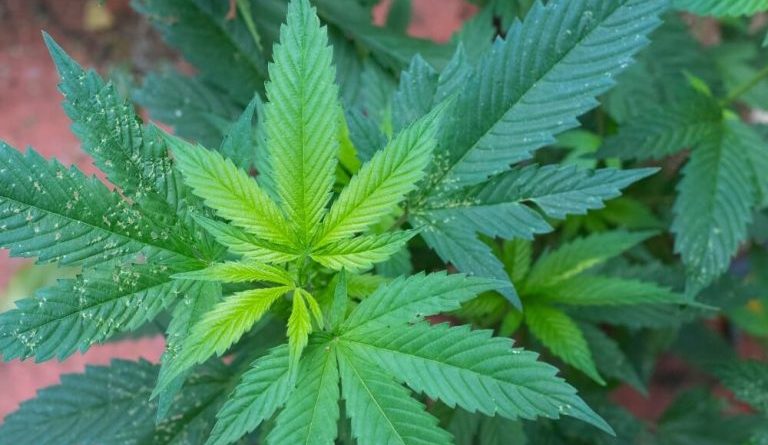Understanding and Addressing Zinc Deficiency in Cannabis Cultivation
Cultivating cannabis is a delicate dance that requires a meticulous balance of nutrients to ensure robust growth and a bountiful harvest. Among the various essential elements, zinc plays a crucial role in the overall health and development of cannabis plants. However, a deficiency can manifest in subtle yet impactful ways, affecting the plant’s vitality and productivity. In this exploration, we delve into the intricacies of zinc deficiency in cannabis and how cultivators can diagnose, treat, and prevent this common issue.
The Role of Zinc in Cannabis Growth
Essential Micronutrient
Zinc is classified as a micronutrient, meaning it is required by plants in relatively small quantities compared to macronutrients like nitrogen, phosphorus, and potassium. Despite its low concentration in the plant, zinc plays a pivotal role in various physiological processes crucial for cannabis growth and development.
Enzyme Activation and Hormone Regulation
Zinc acts as a cofactor for numerous enzymes involved in essential metabolic functions. It is particularly crucial for the activation of enzymes responsible for the synthesis of growth hormones and the regulation of gene expression. In cannabis, this translates to its role in cell division, root development, and overall plant structure.
Photosynthesis and Nutrient Uptake
Zinc is also integral to photosynthesis, the lifeblood of plant growth. It aids in synthesizing chlorophyll, the pigment responsible for capturing sunlight and converting it into energy. Furthermore, zinc influences the plant’s ability to absorb and transport other nutrients, ensuring a well-rounded and balanced nutrient profile.
Recognizing the Signs of Zinc Deficiency
Interpreting Leaf Symptoms
Zinc deficiency often manifests through distinct visual cues on the leaves of cannabis plants. The earliest signs typically appear on the newer growth, with leaves displaying a yellowing between the veins. This condition is known as interveinal chlorosis and is a hallmark of zinc deficiency.
Stunted Growth and Reduced Internodal Distance
Beyond leaf discoloration, cannabis plants suffering from a lack of zinc may exhibit stunted growth. The internodal distance, or the space between branches, tends to decrease, resulting in a bushier appearance. This is a consequence of impaired cell division and elongation, directly impacting the plant’s overall stature.
Leaf Deformities and Necrosis
As the deficiency progresses, leaves may develop deformities such as twisting or curling. In severe cases, necrosis, or tissue death, may occur at the tips and edges of the leaves. These visual symptoms provide valuable insights into the plant’s health and can guide cultivators in identifying and addressing the underlying issue.
Addressing Zinc Deficiency: A Cultivator’s Guide
Soil and pH Management
Zinc availability is closely linked to soil pH. In alkaline soils, zinc becomes less accessible to plants. Cultivators should maintain a slightly acidic to neutral pH range (around 6.0 to 7.0) to optimize zinc uptake. Regular soil testing and appropriate amendments can create an environment conducive to nutrient absorption.
Balanced Nutrient Feeding
Providing a well-balanced nutrient solution is fundamental to preventing zinc deficiency. While zinc is required in smaller quantities, neglecting its inclusion in a nutrient regimen can lead to deficiencies. Utilizing a quality cannabis fertilizer that includes micronutrients or supplementing with a zinc-specific fertilizer ensures that plants receive a comprehensive array of essential elements.
Foliar Sprays for Quick Correction
When rapid correction is needed, foliar sprays can be an effective solution. Water-soluble zinc formulations can be applied directly to the leaves, allowing for swift absorption. This method is beneficial when addressing acute zinc deficiencies and providing immediate plant relief.
Preventive Measures for Long-Term Success
Regular Monitoring and Diagnosis
Regularly monitoring the health of cannabis plants is essential for catching nutrient deficiencies early on. Periodic inspections and a keen eye for visual cues enable cultivators to diagnose and address issues before they escalate. A proactive approach significantly contributes to the long-term success of a cannabis cultivation endeavor.
Understanding Nutrient Interactions
Zinc interacts with other nutrients in complex ways. Excessive levels of certain nutrients, such as phosphorus or iron, can interfere with zinc absorption. A nuanced understanding of nutrient interactions empowers cultivators to fine-tune their nutrient regimens and maintain an optimal balance for healthy plant growth.
Genetic Considerations
Certain cannabis strains may exhibit varying sensitivities to nutrient imbalances, including zinc deficiency. Understanding the specific needs of the chosen strain and adapting cultivation practices accordingly can contribute to a more resilient and productive crop.
Conclusion: Nurturing Cannabis to Flourish with Adequate Zinc
Zinc deficiency in cannabis is a nuanced challenge that requires a combination of vigilance, knowledge, and proactive measures. By understanding the critical role of zinc in cannabis growth, recognizing the visual indicators of deficiency, and implementing effective remediation strategies, cultivators can foster a thriving and productive cannabis garden. As the guardians of these green companions, cultivators hold the key to unlocking the full potential of their cannabis plants, ensuring a bountiful harvest and a flourishing cultivation journey.


